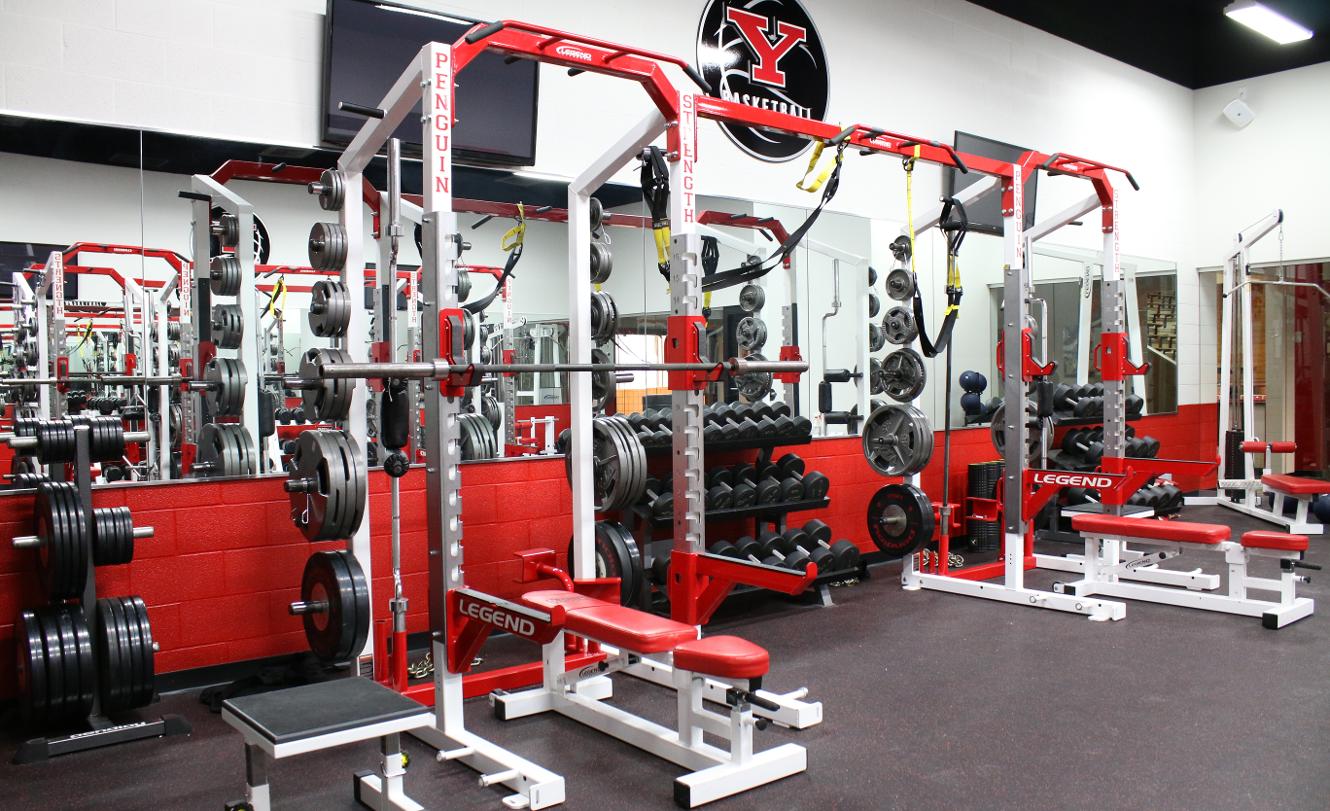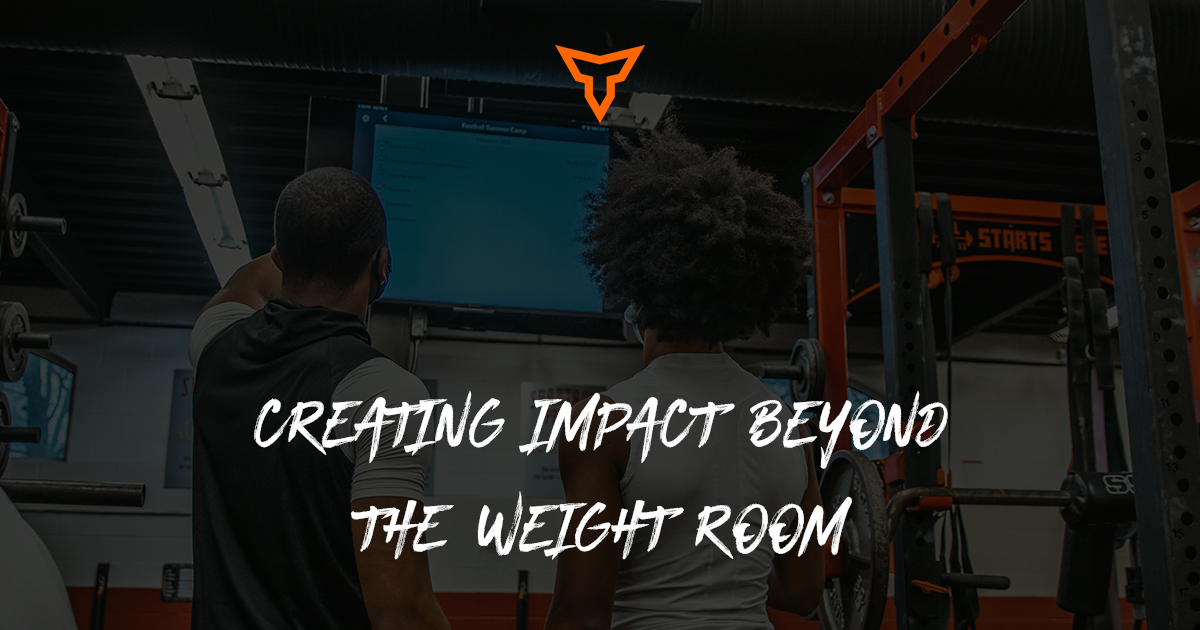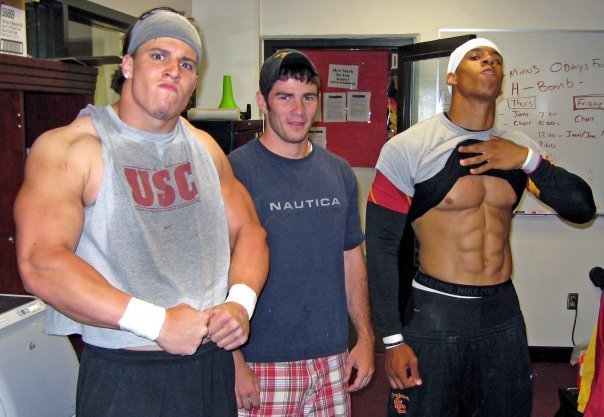Here in Niagara, the local talent isn’t always highlighted on the field, court, or mat. Instead, the young athletes of our community head to the docks and hit the water. Our region is home to some of the finest rowing in the country. Thousands of folks make their way to St. Catharines for the annual Canadian Henley Regatta every year to see the top crews compete from across the globe.
Being local, our strength staff have the unique privilege of training and coaching some of the top rowers (young and old) coming out of Niagara; many go on to compete at top colleges across the world. Over many years of coaching, mistake-making, and learning, we’ve developed a better understanding of how to prepare oarsmen for optimal performance and longevity in their sport. Keep in mind that this is just our perspective; we are not rowing coaches by any means.
The Sport of Rowing
For those unfamiliar with the sport, a quick breakdown. Rowing regattas are typically 2km lane races of different event types that are conducted across multiple heats. Rowers might compete as a single, in a pair, in a group of four or eight. Competitors typically sweep (single oar per oarsman) but may participate in sculling events (two oars per oarsman).
Certain competitions may be long-distance head races that release competitors at different time intervals and compare time to course completion. During the winter months, erg racing (typically on a Concept 2 Rowing Ergometer) takes the forefront.
A simple Google search can help you better understand the sport itself; a little bit of research can really help funnel your training approach. Many of our rowing athletes compete in multiple event types across multiple distances throughout the year; as strength coaches, we want to consider 3 aspects when catering to the individual athlete:
- Event Participation
- Distance
- Weight Class
- Crew (Single, Pair, etc.)
- Boat Role
- Seat Placement
- Oars (Sweeper, Sculler)
- Competition Dates
By taking these factors into consideration, we can better cater our training programs to the demands of our rowing athletes.
Physiology Breakdown
To ensure we target appropriate adaptations, we need to have a better understanding of the sport demands from a physiological perspective. Our rowers undergo very rigorous practices; many will spend countless hours on the water, on an erg, and in the weight room. It is imperative to their recovery that we understand the stressors in the first place. When discussing these factors, we assume the rowing athlete has the optimal skill, baseline strength, aerobic capacity, and technical economy when performing their craft.
+ Energy System Demands
When we classify rowing, we can categorize it as a primarily oxidative sport. For 2km heats, a race may last anywhere from 5-8 minutes depending on the skill and experience of the athletes. For head races (most ranging 4-6km), competitions may last 20-30 minutes.
That being said, we need to narrow the lens even further and target weak points within the energy system needs of our rowers. A rowing athlete could have the aerobic capacity to row for hours on end, yet if they can’t sustain a forceful stroke at a higher frequency, it won’t matter when they cross the finish line. Having a higher aerobic capacity simply raises the ceiling; we need to pull the floor with us.
All good rowing athletes have a solid aerobic base, that goes without question. Elite rowers have a higher anaerobic lactic threshold upon which to buffer lactate. The more efficient the buffering mechanism, the longer a rower can sustain higher stroke outputs more frequently. An oarsman’s anaerobic lactic threshold is one of the key indicators that will dictate performance in 2km races. When looking to plan an efficient training program, it would be wise to keep this in mind.
+ Strength/Power Demands
Similar to how we classify energy system demands, rowing can be thought of as an endurance sport. It’s a bilateral effort that is cyclical in nature; athletes repeat similar stroke outputs and frequencies time and time again.
However, we once again find ourselves looking to narrow the lens. A race is a combination of strokes over the course of time; this in itself is an endurance endeavor. That being said, a single stroke is one of power; we aim to generate the most force per unit time.
Improving the frequency of each stroke OR the force at which it pushes against the water will improve the performance of the crew; by once again raising the ceiling, we are able to pull the floor. When comparing average rowing performance to those of elite levels, it is no surprise that peak power proved to be a key indicator of performance (KPI). By improving stroke force, stroke frequency, or both, the crew propels itself further down the course in less time leading to a better performance.
+ Quantifying KPIs
A simple way to quantify KPI improvements is to have rowers perform a 1-minute Wingate on a rowing ergometer at the highest drag factor possible. Ideally, blood lactate samples would be taken throughout the assessment, however, this is impractical in most environments. Instead, we can look at power output and power-per-stroke. If you can’t set the ergometer monitor to measure these directly, use a video camera to review variables. When analyzing the results, we want to look for peak power (highest wattage achieved) and the time it takes to see a reduction of 35% from peak power (anaerobic lactic threshold). Peak power is usually reached within the first 6 seconds of the assessment while the lactic threshold is usually visible around 45 seconds. With appropriate training, we would hope to increase both peak power and duration before a resulting 35% decrease.
While peak power and anaerobic lactic threshold are valuable indicators of performance, this isn’t to say we should neglect endurance or aerobic qualities. The ability to recover between strokes and races is crucial to sustaining top-quality performance. However, most rowing athletes develop these qualities and maintain them regularly at practice; there wouldn’t be much rate of return should we hammer these qualities further in the weight room. We should look to fill the gaps and focus on adaptations that improve key performance indicators (peak power and anaerobic lactic threshold).
Biomechanical Breakdown
A rowing stroke can be broken down into 4 phases: the catch, the drive, the finish, and the recovery. Skilled rowers fluidly combine forceful extension at the knees, hips, and spine in order to propel themselves down the course. As strength coaches, we can better target weak links by breaking down stroke mechanics to understand applicable muscle action and joint movement.
To keep it simple, force generation occurs at the hip. More forceful hip extension produces a more forceful stroke. It would seem obvious to set your training focus solely on hip extension, however, we must understand that the potential for force generation at the hip is regulated by the ankle and knee.
An oarsman with greater ankle mobility allows for greater knee flexion. The degree of knee flexion will dictate the potential for hip extension. More hip extension means greater potential for force production. Improving ankle mobility of rowers in your weight room may have a greater transfer to the water.
The trunk plays a crucial role in transferring force from the hips into the shoulders and arms for stroke completion throughout the drive and finish phases. Muscles of the lumbar spine undergo tremendous anti-flexion and anti-rotation in order to transfer force up through the thoracic musculature. Efficient thoracic extension (and rotation in the sweep) continues to transfer force through the shoulder where it can get carried to the oar by the elbow and wrist.
Most rowing injuries are chronic in nature and occur through the trunk or hip. As most of us are stronger than we are stable, it’s no surprise that the majority of issues occur at the spine. Stress fractures at the ribs and chronic low back pain are not uncommon in the sport. In general, most injuries will be caused by muscle-joint dysfunction OR tissue tolerance.
Should the force generated by the hips be greater than the tolerance of tissue, injury or downregulation will occur. Downregulation acts as a safety mechanism and results in force “bleeding” to prevent injury. Should muscles be unable to fulfill their role in performance, synchronous muscles will compensate to complete the action. Over time, this dysfunction can lead to overuse issues that may result in injury. As strength coaches, understanding mechanisms of injury can help us get ahead of potential issues. By understanding function at the shoulders, hips, and spine, we can better implement appropriate training stimuli to not only ensure optimal performance but longevity in the sport.
Approaching Training
Assuming base levels of strength, aerobic capacity, and technical proficiency are achieved, our training focus is two-fold; we must aim to increase peak power and anaerobic lactic threshold while reducing chronic injury occurrence. Improve stroke force, stroke frequency, or both in order to shave precious seconds off your athletes’ time. Ideally, we would analyze each oarsman individually to identify what weak links exist in their respective relative chain; this would better help us pinpoint (and improve) factors that affect THEIR performance. In most team settings, this would prove extremely time-consuming and somewhat impractical. We suggest catering to the masses.
In general, we want to build the engine and pump up the tires. Having a ton of horsepower is useless with flat tires and having full tires won’t matter with a weak engine.
For us, we focus on building explosive strength of the hips while catering isolation work to ankle mobility and lumbar stability. The following paragraphs outline a few methods that may prove beneficial for your oarsmen; they are by no means exhaustive.
For explosive strength, Olympic lifting variations, squat variations, and any form of hinge exercise performed at high velocities would prove beneficial to any rower. The secondary focus should be on pulling exercises that emphasize rhomboids, lats, and rear delts. Pendlay rows, high pulls, and single-arm variations can all aid in this endeavor. Intensities will vary depending on the time of year, training age, and phase for improvement.
While squat variations may improve ankle mobility, we recommend incorporating elevated calf raises under heavy load to ensure full stretch of the Achilles tendon. We like to use a safety squat bar (hands assisted) with a wedge to perform this exercise. Single leg calf raises and spring ankle models are also effective.
In terms of lumbar stability, we have to look at anti-motion around different axes. Incorporating exercises that challenge anti-lateral flexion (x-axis), anti-rotation (y-axis) and anti-flexion/extension (z-axis). Heavy carries, split stance single arm rows and inverse sit-ups are just a few examples. In general, aim to maintain proximal stability at the hip while increasing levels of instability OR distal challenge.
Should oarsmen be neglecting anaerobic lactic work at practice, we can look to integrate lactic intervals to help improve buffering mechanisms responsible for clearing lactate. High-intensity intervals of 30-50 sec durations with identical rest periods may prove efficient, particularly if completed in patterns similar to that of a stroke. Ideally, these would be done on the water or on a rowing ergometer.
Should on-water intervals prove impractical (weather for example), we can look at using timed sets with major compound exercises. These include squat, press, and row variations. Be aware of potential limiting factors (eg: low back when squatting, forearms with rows) that may hinder intended adaptation. Combining long-duration yielding isometrics interspersed with rapid concentric actions of muscle groups have proven (though painful) to be effective for improving anaerobic lactic thresholds. Feel free to get creative with your intervals.
Special Considerations For Training Rowers
Compared to most sports, rowing is extremely unique in that it is the only bilateral sport that is cyclical in nature. While rowing may be bilateral, we should not neglect unilateral work. Incorporating single leg and single-arm variations can help alleviate potential dysfunctions and reduce the risk of overuse injuries. By mitigating risk, we can increase sport longevity and potentially improve on-water performance.
It should also be taken into consideration that rowing is one of few sports that require more pulling than pressing. While other sport athletes use pull exercises to improve their push, rowers use pull exercises to improve their pull. Knowing this, we can prioritize exercises accordingly. While pressing exercises can be prioritized with the intent of improving function, we wouldn’t reap much reward from trying to build an athlete’s one rep max.
In Closing
While training rowing athletes may seem universal, we must accommodate a level of specificity if we are to transform the good to great. We must look to fill the gaps: improve weak links in our athletes’ relative chains. Once baseline levels of strength, aerobic capacity, and technical proficiency have been achieved, aim to train factors affecting your oarsman’s peak power outputs and anaerobic lactic thresholds. Keep communications open with the rowing coach to ensure your training plan doesn’t conflict with sport practices resulting in insufficient recovery. While rowing may be classified as an aerobic-endurance sport, we would be doing a disservice if we simply added more of what they’re already getting.
Subscribe to our blog
Subscribe to receive the latest blog posts to your inbox every week.
Related posts

Connecting the Training Room With the Weight Room

Creating Impact Beyond the Weight Room


